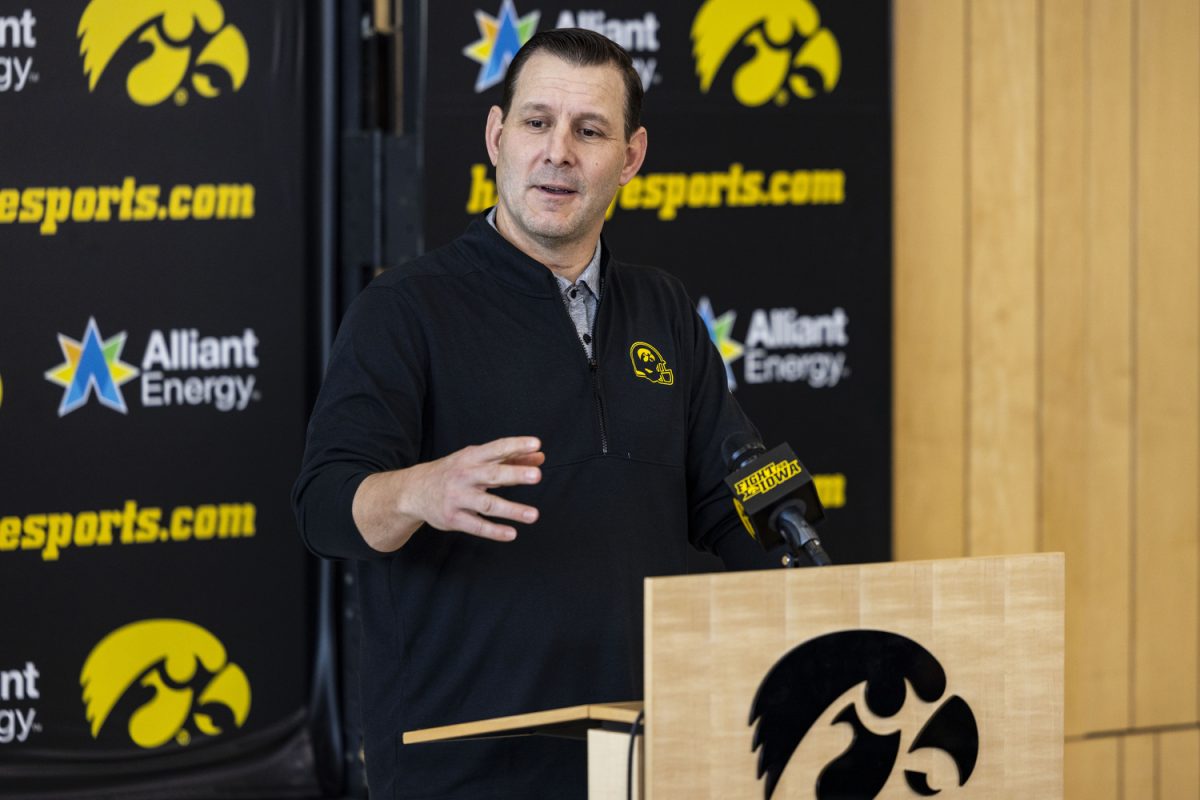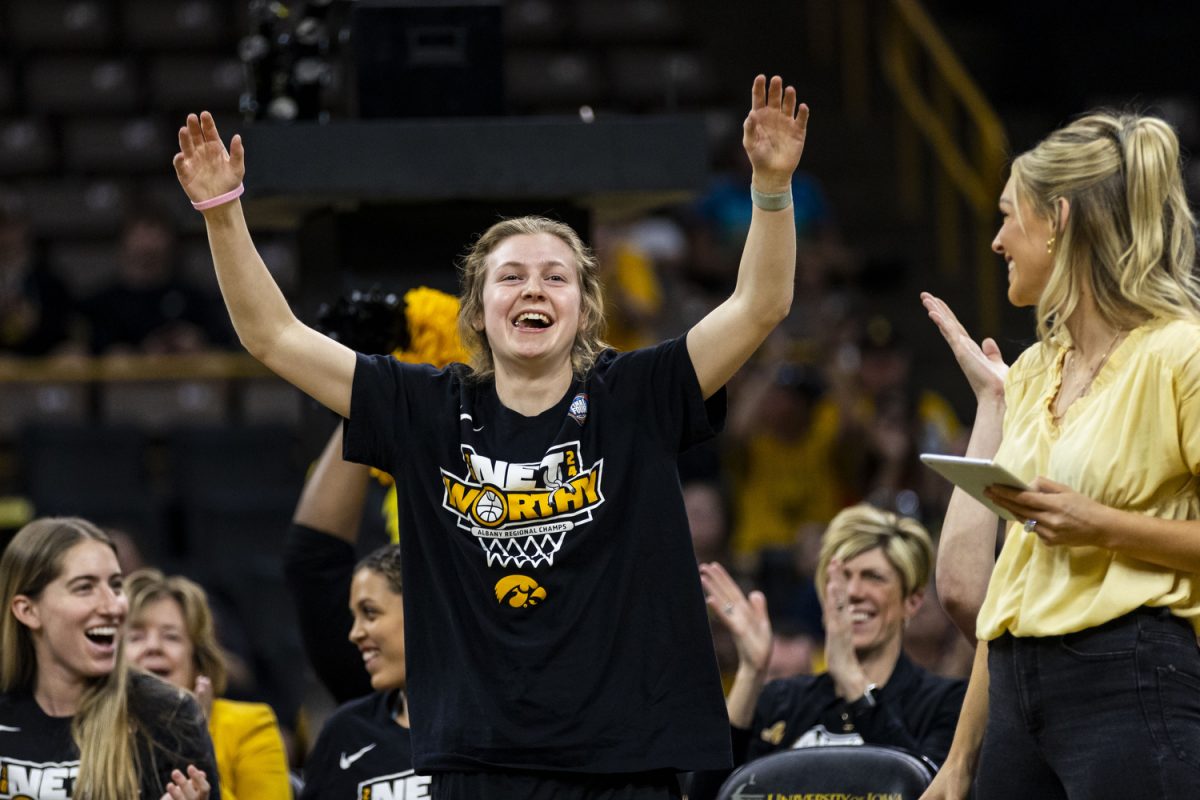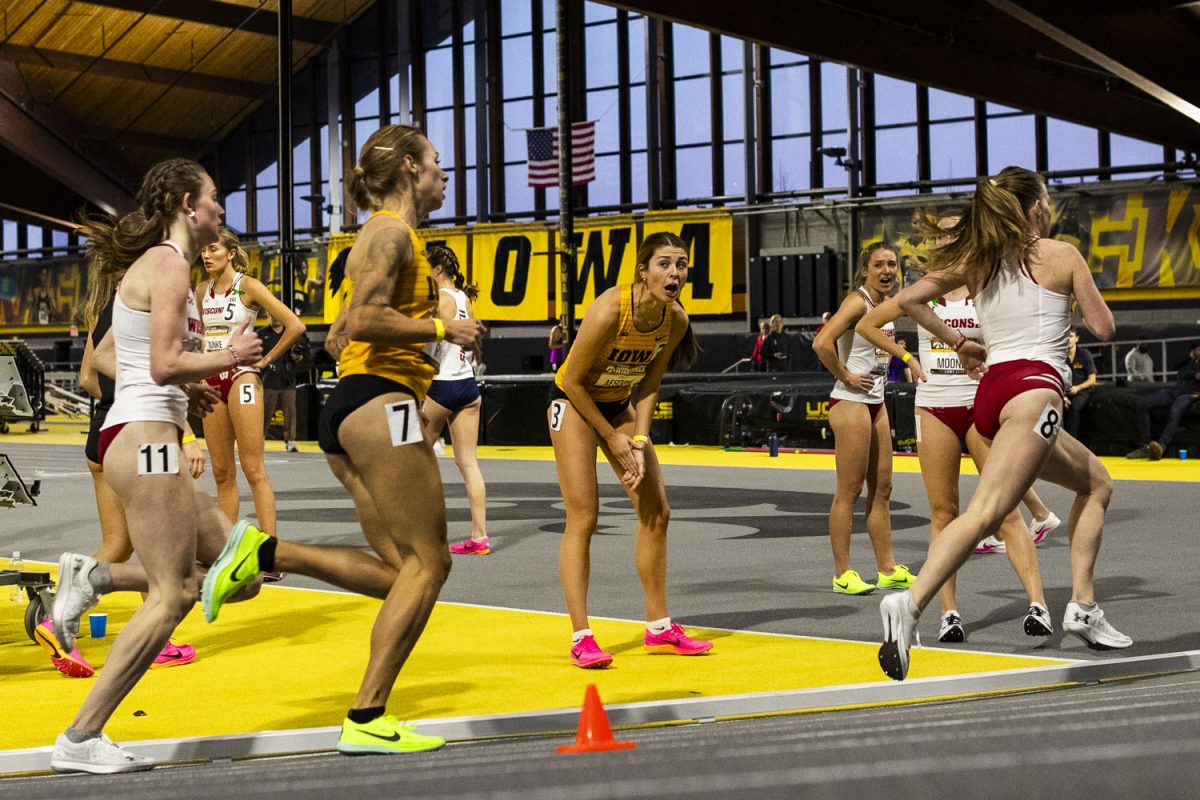For years, concussions have been something of a quandary in sports — they were not taken seriously, and the pervasive idea was that they were something to be played through.
Now, the game has changed.
Head injuries, specifically concussions, have come into the limelight in the past few years. As a result, an increased number of coaches and players have begun to pay attention.
“It’s every sport, really — football just came out with a report that 1-in-3 NFL players will have Parkinson’s within five years of their retiring,” Dave DiIanni, Iowa women’s head soccer coach said. “I think there are a lot of different ways that kids are getting head injuries.”
The report that DiIanni refers to was released by the NFL on Sept. 12 and was remarkable in that it was one of the first times that a major sports brands has acknowledged that brain injuries are an enormous issue.
While college sports such as soccer certainly differ from the hard-hitting life of NFL players, there is still quite a bit of danger involved.
According to the American Academy of Neurology, women’s college soccer players suffer head injuries at a rate of about 1.8 concussions per 1,000 games — that’s more than women in college softball and basketball combined.
Clete Younger, a medical director at Northbrook Manor Care Center and Living Centers East and West in Cedar Rapids, said the source of concussions is unknown.
“No one really knows what causes them for sure — we know it involves blood-flow, but it’s still a bit of a mystery,” he said. “They’re unpredictable when it comes to their long-term effects, as well — it’s hard to predict the long term effects for a variety of reasons.
“One being, we just don’t have studies of these young kids who get them.”
While the medical risks associated with playing contact sports are ever present, they are not things that often go through an athlete’s mind.
This is especially true when it comes to soccer. One of the more common plays in a soccer game is a corner kick and with that comes bodies flying everywhere.
Anne Marie Thomas, who is one of the best on the team at using her head on the ball, can only be described as fearless when it comes to going up for the ball.
And in her mind, she has to be.
“If you don’t think about it and if you’re just going for it, the other person usually backs away,” Thomas said. “It’s not always as big of a deal as what some people think that is.”
As Thomas’ case illustrates, college student-athletes are some of the most competitive people on the planet, and in the heat of the moment, they are trying to win, plain and simple.
“It’s like the ball is kicked, and that’s all you’re focused on, dodging people and then meeting the ball,” Iowa captain Melanie Pickert said. “It’s scary, but I try not to think about because I’ve gone through [concussions] and I wear a thing on my head to help, but it’s not going to completely prevent them.”
Prevention is the name of the game, and while various forms of protective equipment have improved, it’s virtually possible to completely eradicate concussions.
In addition, many athletes also take matters into their own hands when it comes to recovering from injuries — whether it be a concussion or another ailment.
“It’s all about really taking care of yourself on the times when you’re off the field — how you eat, how you sleep, how you ice bath all that stuff,” senior Emily Scott said. “We’re doing the best we can and sometimes those injuries are inevitable.”
The hope, however, is that those injuries will someday not be inevitable, and change is certainly coming to the college sports sphere.
Rules and how the game is actually played have improved. Last July, the NCAA settled a lawsuit that created a $70 million fund that is supposed to diagnose current and former athletes about whether they suffered brain injuries in the college sports they played.
As a result, diagnosis is beginning to be taken more seriously than ever, and coaches are having to adjust.
“There are a lot of different ways that kids are getting injuries and I think some of it is the physicality and some of it is maybe heading the ball incorrectly and other technical things,” DiIanni said. “We’ve only had one issue this year, but when you start getting more than one, it feels like it’s a disease that’s spreading through the team.”






